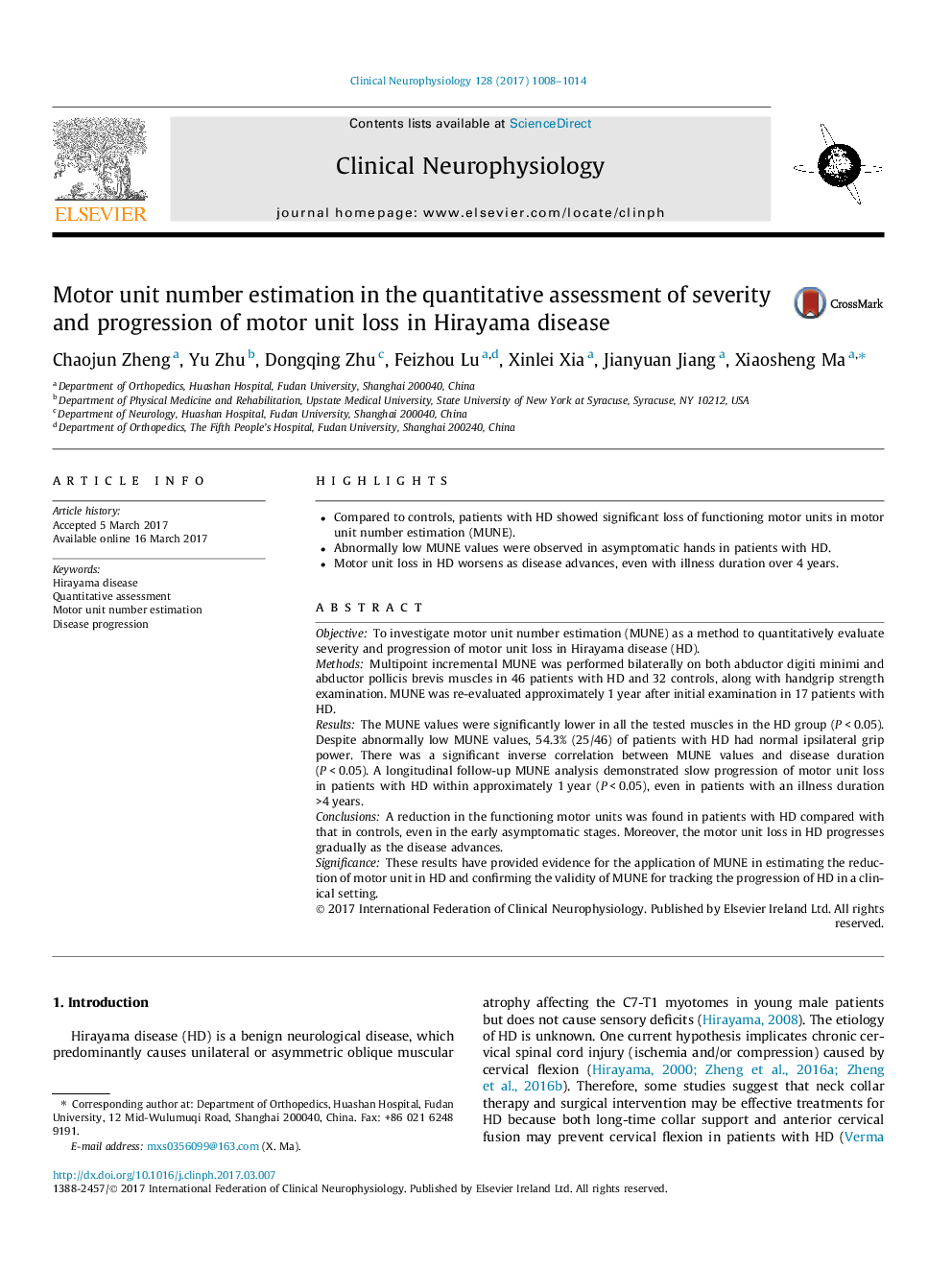| Article ID | Journal | Published Year | Pages | File Type |
|---|---|---|---|---|
| 5627916 | Clinical Neurophysiology | 2017 | 7 Pages |
â¢Compared to controls, patients with HD showed significant loss of functioning motor units in motor unit number estimation (MUNE).â¢Abnormally low MUNE values were observed in asymptomatic hands in patients with HD.â¢Motor unit loss in HD worsens as disease advances, even with illness duration over 4 years.
ObjectiveTo investigate motor unit number estimation (MUNE) as a method to quantitatively evaluate severity and progression of motor unit loss in Hirayama disease (HD).MethodsMultipoint incremental MUNE was performed bilaterally on both abductor digiti minimi and abductor pollicis brevis muscles in 46 patients with HD and 32 controls, along with handgrip strength examination. MUNE was re-evaluated approximately 1Â year after initial examination in 17 patients with HD.ResultsThe MUNE values were significantly lower in all the tested muscles in the HD group (PÂ <Â 0.05). Despite abnormally low MUNE values, 54.3% (25/46) of patients with HD had normal ipsilateral grip power. There was a significant inverse correlation between MUNE values and disease duration (PÂ <Â 0.05). A longitudinal follow-up MUNE analysis demonstrated slow progression of motor unit loss in patients with HD within approximately 1Â year (PÂ <Â 0.05), even in patients with an illness duration >4Â years.ConclusionsA reduction in the functioning motor units was found in patients with HD compared with that in controls, even in the early asymptomatic stages. Moreover, the motor unit loss in HD progresses gradually as the disease advances.SignificanceThese results have provided evidence for the application of MUNE in estimating the reduction of motor unit in HD and confirming the validity of MUNE for tracking the progression of HD in a clinical setting.
